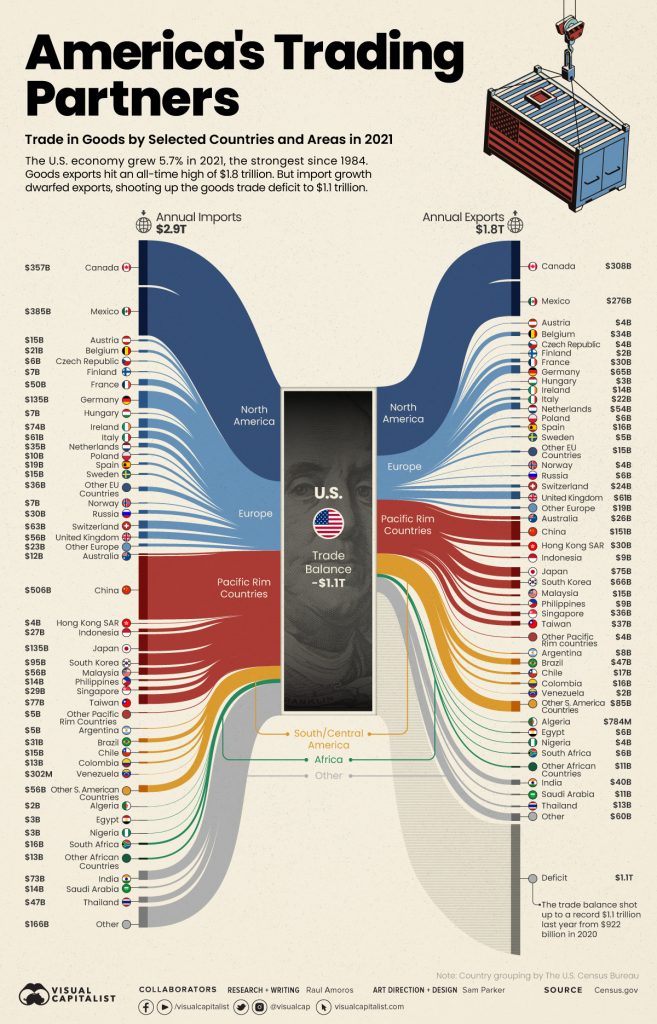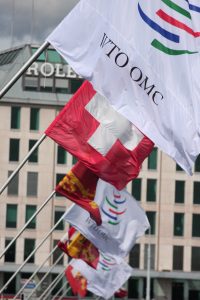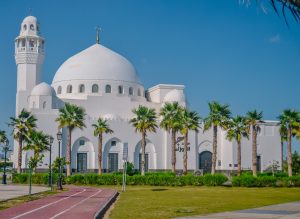2.1 The Economic Environment
The economic environment is important because of the rapid integration of international economic markets. Increasingly, businesses, consumers, and governments realize that their lives are affected not only by what goes on in their own town, state, or country but also by what is happening around the world. Consumers can walk into their local shops today and buy goods and services from all over the world. Local businesses must compete with these foreign products. However, many of these same businesses also have new opportunities to expand their markets by selling to a multitude of consumers in other countries. The advance of telecommunications is also rapidly reducing the cost of providing services internationally, while the Internet has changed the nature of how many products and services are sold and marketed.
A nation’s economic situation represents its current and potential capacity to produce goods and services. The key to understanding market opportunities lies in the evaluation of the stage of a nation’s economic growth. Economic growth is the increase in the amount of the goods and services produced by an economy over time. It is conventionally measured as a percentage change in the Gross Domestic Product (GDP) or Gross National Product (GNP). These two measures, which are calculated slightly differently, total the amounts paid for the goods and services that a country produced. As an example of measuring economic growth, a country that creates 9,000,000 in goods and services in 2020 and then creates 9,090,000 in 2021 has a nominal economic growth rate of 1% for 2021.
In order to compare per capita economic growth among countries, the total sales of the countries to be compared may be quoted in a single currency. This requires converting the value of currencies of various countries into a selected currency, for example, U.S. dollars. One way to do this conversion is to rely on exchange rates among the currencies, for example, how many Mexican pesos buy a single U.S. dollar? Another approach is to use the purchasing power parity method. This method is based on how much consumers must pay for the same “basket of goods” in each country.
Inflation or deflation can make it difficult to measure economic growth. If GDP, for example, goes up in a country by 1% in a year, was this due solely to rising prices (inflation) or because more goods and services were produced and saved? To express real growth rather than changes in prices for the same goods, statistics on economic growth are often adjusted for inflation or deflation.
For example, a table may show changes in GDP in the period 2010 to 2020, as expressed in 2010 U.S. dollars. This means that the single currency being used is the U.S. dollar, with the purchasing power it had in the U.S. in 2010. The table might mention whether the figures are “inflation-adjusted” or real. If no adjustments were made for inflation, the table might make no mention of inflation-adjustment or might mention that the prices are nominal.
A country’s balance of payments is a record of its economic transactions with the rest of the world; this record shows whether a country has a trade surplus (value of exports exceeds the value of imports) or a trade deficit (value of imports exceeds the value of exports). Trade figures can be further divided into merchandise trade and services trade accounts; a country can run a surplus in both accounts, a deficit in both accounts, or a combination of the two. In 2021, the U.S. imported $3.4 trillion in goods and services and exported $2.5 trillion, totalling a trade deficit of $859.1 billion (Amadeo, 2022).

Trade

When the Uruguay Round, the most recently completed round, was finalized in 1994, the member countries succeeded in extending the agreement to include liberalization promises in a much larger sphere of influence. Now countries not only would lower tariffs on goods trade but also would begin to liberalize the agriculture and services markets. They would eliminate the many quota systems—like the multifiber agreement in clothing—that had sprouted up in previous decades. And they would agree to adhere to certain minimum standards to protect intellectual property rights such as patents, trademarks, and copyrights. The World Trade Organization (WTO) was created to manage this system of new agreements, to provide a forum for regular discussion of trade matters, and to implement a well-defined process for settling trade disputes that might arise among countries.
Foreign exchange provides a means for settling accounts across borders. The dynamics of international finance can have a significant impact on a nation’s economy as well as the fortunes of individual companies. Currencies can be subject to devaluation or revaluation as a result of actions taken by a country’s central banker. Currency trading by international speculators can also lead to devaluation. When a country’s economy is strong or when demand for its goods is high, its currency tends to appreciate in value. When currency values fluctuate, global firms face various types of economic exposure. Firms can manage exchange rate exposure by hedging.
Case: Saudi Vision 2030 Transformation and Opportunities
Entrepreneurs and business leaders recognize that finding new opportunities for growth and enhancing revenues is a natural progression for a successful business. Having worked in the Arabian Gulf countries for 18 years before moving to Canada, I have learned about the great opportunities that markets in that region offer that are often overlooked or underestimated. Saudi Arabia and the United Arab Emirates, both of which have relatively developing markets, have large young populations with strong purchasing power.

Saudi enjoys high political stability and offers ample business opportunities as it’s been traditionally known as a major oil exporter; this now still makes up 90% of KSA’s income. However, under Vision 2030, Saudi is moving towards diversification and investing in new sectors like petrochemicals, power, telecoms, healthcare, and even tourism. These sectors are emerging sectors, which are new businesses, that bring in foreign investment, create new opportunities, attract talent and push economic and cultural diversification and growth.
Saudi has a GDP of $754 billion in 2014 (World Bank, current estimated prices), and is considered the largest economy in the Middle East. However, working in Saudi doesn’t come without challenges and businesses need to understand these implications. First, it is impossible for new businesses operating there to succeed without the “right relationships” and hiring local staff. It is also important to understand and abide by Islamic law and be aware of different business etiquette. For example, having a different work week has implications for dealing with banks internationally. It is also extremely important to re-evaluate the branding to make sure that it can work in Saudi Arabia and resonates with Saudi audiences. Although, It was difficult in the past to obtain visas but Saudi is now open and expats can obtain visas easily through an online system. It is therefore important to highlight this missed opportunity and the great transformation and development achieved after the launch of its Vision 2030.
Rania Alwreikat, March 2023
Core Principles of International Marketing – Chapter 4 by Babu John Mariadoss is licensed under a Creative Commons Attribution-NonCommercial-ShareAlike 4.0 International License, except where otherwise noted.

